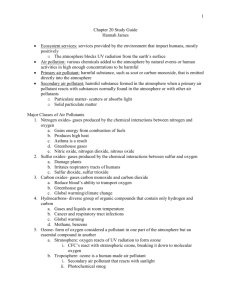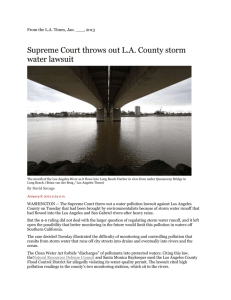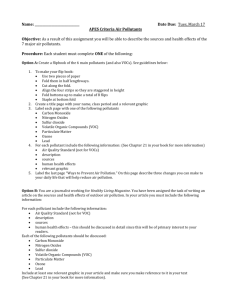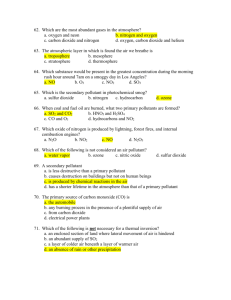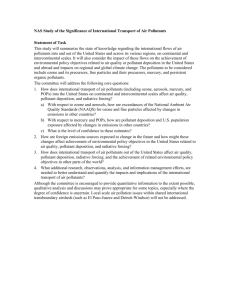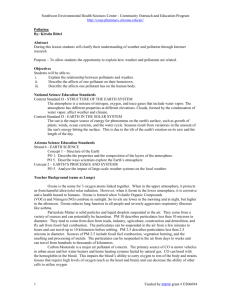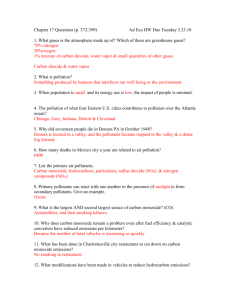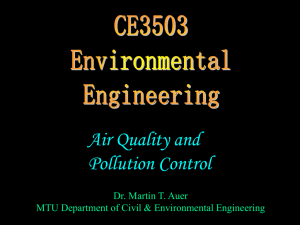S2. Air Quality-Answers to check yourself questions in the student
advertisement
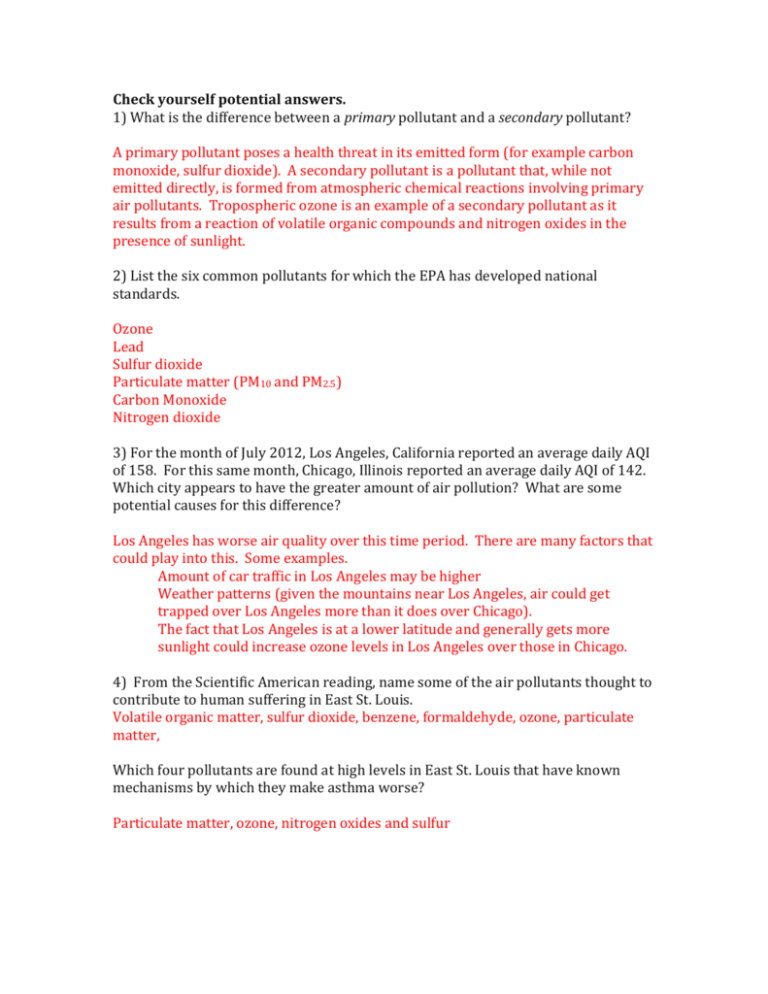
Check yourself potential answers. 1) What is the difference between a primary pollutant and a secondary pollutant? A primary pollutant poses a health threat in its emitted form (for example carbon monoxide, sulfur dioxide). A secondary pollutant is a pollutant that, while not emitted directly, is formed from atmospheric chemical reactions involving primary air pollutants. Tropospheric ozone is an example of a secondary pollutant as it results from a reaction of volatile organic compounds and nitrogen oxides in the presence of sunlight. 2) List the six common pollutants for which the EPA has developed national standards. Ozone Lead Sulfur dioxide Particulate matter (PM10 and PM2.5) Carbon Monoxide Nitrogen dioxide 3) For the month of July 2012, Los Angeles, California reported an average daily AQI of 158. For this same month, Chicago, Illinois reported an average daily AQI of 142. Which city appears to have the greater amount of air pollution? What are some potential causes for this difference? Los Angeles has worse air quality over this time period. There are many factors that could play into this. Some examples. Amount of car traffic in Los Angeles may be higher Weather patterns (given the mountains near Los Angeles, air could get trapped over Los Angeles more than it does over Chicago). The fact that Los Angeles is at a lower latitude and generally gets more sunlight could increase ozone levels in Los Angeles over those in Chicago. 4) From the Scientific American reading, name some of the air pollutants thought to contribute to human suffering in East St. Louis. Volatile organic matter, sulfur dioxide, benzene, formaldehyde, ozone, particulate matter, Which four pollutants are found at high levels in East St. Louis that have known mechanisms by which they make asthma worse? Particulate matter, ozone, nitrogen oxides and sulfur


